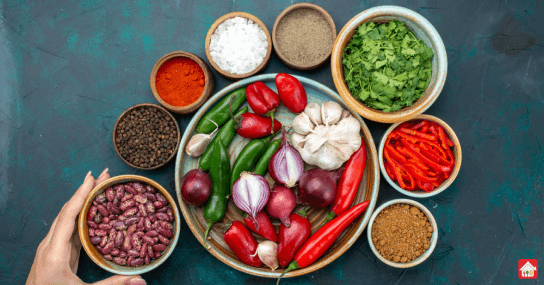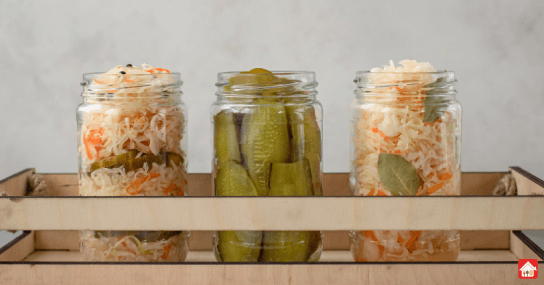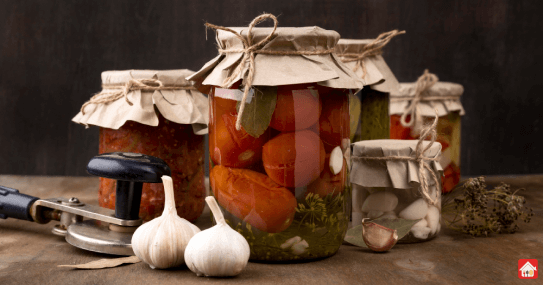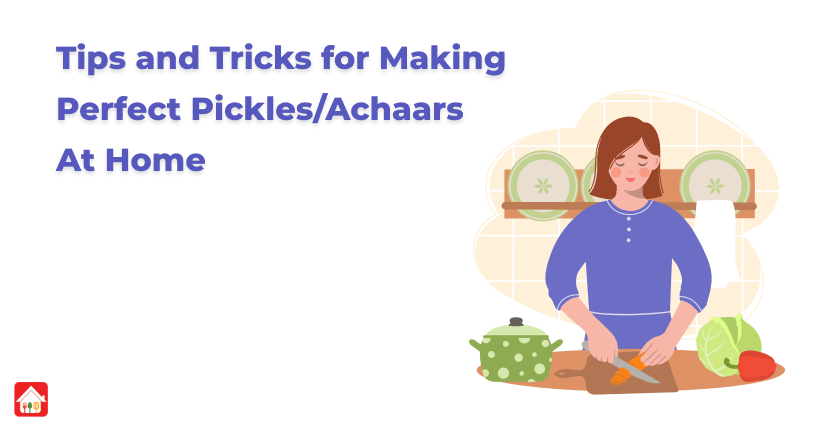Table of Contents
Indians enjoy a spoonful of pickles with every meal. Pickles are great with rice or parathas. Pickles are tangy and flavorful. They go well with Indian cuisine. Pickles are not only versatile but also delicious and go with anything. Pickles can be made anytime, except those made from seasonal fruits and veggies, like mangoes. You can still make mango pickles in the summer and enjoy them all year. This is what Indian mothers do.
Pickling and fermentation is a complex art that requires a great deal of technical knowledge. These small details can make a big difference in the taste of your pickle. Beginners need to follow the steps of a pickling recipe. Unlike cooking, where you may skip a few vegetables and customize them according to your preferences, changing or cutting any step could harm your health when pickling or fermenting meat and vegetables.
Here are some tips and tricks to make your pickles better:
How to Prepare Perfect Pickles at Home
Use Fresh Products and Ingredients

When making Indian pickles, we use various spices, including masala (curry powder) and oil. We must ensure our oil or spices are young enough when adding herbs to pickles. The pickle’s taste and quality may be affected if the spices or oil are old. Pickles require oil as a critical ingredient. It is essential to choose the right oil for a pickle. Indian pickles are not prepared using olive oil but rather mustard oil. Mustard oil is the most commonly used because it blends with Indian spices.
Mix Ingredients Well

Mix, mix, and more is the key to making delicious pickles. Pickles require many ingredients, so you need to mix them all well. When the ingredients are mixed properly, they interact and combine to create a delicious flavor. The pickle is still shaken repeatedly after completion and before use. It is essential to do this so all ingredients can combine and flavors are spread evenly. Wear gloves to mix the ingredients. A large spatula or spoon is optional.
Be Aware of Knife Cuts and Liquid Needs
You can cut a fruit or vegetable in any way while pickling. This is not true. If you want to pickle carrots, for example, they should be cut into a coin shape, as the center of the carrot is the sweetest. Follow the recommended knife cuts when making your pickle recipe. The level of pickling liquid is another thing to consider. Whether you’re using oil or vinegar, maintain the proportion of liquid to vegetable according to the recipe. If you use a jar with a metal lid, keep a distance between the salt and the top. The two can react, resulting in the spoilage of the pickle.
Use the Correct Quantity of Oil
Pickles are made with oil, which acts as a binder. It binds the spices to the fruit or vegetable that we’re using. Oil helps seal off oxygen and air and gives pickles a rich and oily texture. Pickles don’t need much oil to add flavor because the spices usually do the job. Oil helps fruits and vegetables absorb spices, herbs, or seasonings, which makes pickles tastier. This is an ingredient that should be used liberally when preparing pickles. We shake the containers to ensure that oil doesn’t sit at the bottom of the containers, even when pickles are left to rest. All the points above are relevant to a recipe for pickles containing oil, but not those without.
Let Pickles Rest for a Few Minutes Before Storing

Pickles made with oil must rest for a few days before use. Pickles are usually left to rest for 7-10 days. This allows the fruits and vegetables to absorb as many flavors as possible. Pickles can be allowed to rest at room temperature or, in the summer, under sunlight. It is essential to continue mixing ingredients or shaking the container or utensil where the pickles are resting.
Maintain a strict jar-discipline

Keep your jars clean and sterilized. The fermentation process and pickles require an airtight environment. Therefore, your jar lids must be tightly closed. If your old jars are worn, you should use new ones. Be sure to wipe down the jar’s rim before and after filling it and putting the cap on. This will help to reinforce the seal. Label and date your jars to remember when you put the pickles down to ferment. In some recipes, fermentation is required to continue for several months. You must remember the exact date. When storing pickles to ferment, ensure the place is dry and clean. Water and dampness will ruin pickles.
Benefits of Pickles
Pickles are available in both fermented and unfermented varieties. Fermented pickles are more nutritious. Health benefits even the unfermented pickles are high in vitamins and antioxidants. Pickles are high in sodium but low in calories. They boost the immune system, help digestion, and suit your gut. Pickles are traditionally eaten in small pieces, not ladles. Traditional food wisdom also dictates the quantity of food consumed. Pickles are beneficial if we follow these rules.
Conclusion
Pickles can be made by home-makers or in factories. A mango pickle is a typical pickle that we consume. Other pickles include mixed pickles, garlic pickles, and lemon pickles. When making pickles, it is essential to take care when mixing the ingredients and letting the pickle rest for a few days. Pickles are eaten for their spicy, salty, and tangy taste. If one of these elements is not produced as it should be, the pickle will lose its flavor. Here are a few handy tips to make pickles.


